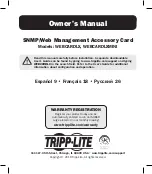
23
Putting into Operation
1. Fill up the supplied water supply tank (canister) with distilled water and place behind/
next to the incubator.
2. Attach the supplied hose the quick-release connections to the canister and the water sup-
ply "H
2
O“ on the rear of the appliance (see Fig. 4 on page 13).
4.2.4 Gas connection
Warning!
Danger of suffocation: In high concentrations, CO
2
and N
2
can have
a suffocating effect. In normal operation, the incubator gives off
small amounts of CO
2
and – if equipped with the O
2
module – N
2
to its environment. You should therefore ensure that the room in
which it is installed is properly ventilated.
Warning!
High concentrations of CO
2
can cause cold burns or frostbite. Avoid
contact with CO
2
gas to the eyes and skin.
Warning!
CO
2
gas bottles may burst or explode at high temperature. Do not
use naked flames in the vicinity of the gas bottles. Store gas bottles
at lower than 50 °C in a well-ventilated location. Prevent water from
penetrating, as well as backflow into the gas bottles. It is essential
that you read the safety notes and regulations of the gas suppliers.
For incubators with basic fittings:
g
Attach the supplied pressure hose to the
gas bottle (pressure regulator) and to the
"CO
2
" connection on the rear of the appli-
ance with two hose clamps ( Fig. 11, see
also page 13 ).
For incubators with CO
22
or premium
p
module:
Two gas bottles can be connected by simply
pushing the supplied pressure hoses onto
the "CO
2
In1" and "CO
2
In2" quick-release
connections on the rear of the appliance
( Fig. 12, see also page 13 ).
Connect the main gas bottle to "In1", a re-
serve gas bottle can be connected to "In2".
Attach the pressure hose to the gas bottles
(pressure regulator) with hose clamps.
CO
2
„CO
2
In“
Gas connection for incubators with basic
fittings
CO
2
CO
2
„CO
2
In1“
„CO
2
In2“
Fig. 12
Gas connection for incubators with CO
2
or Premium modules
















































